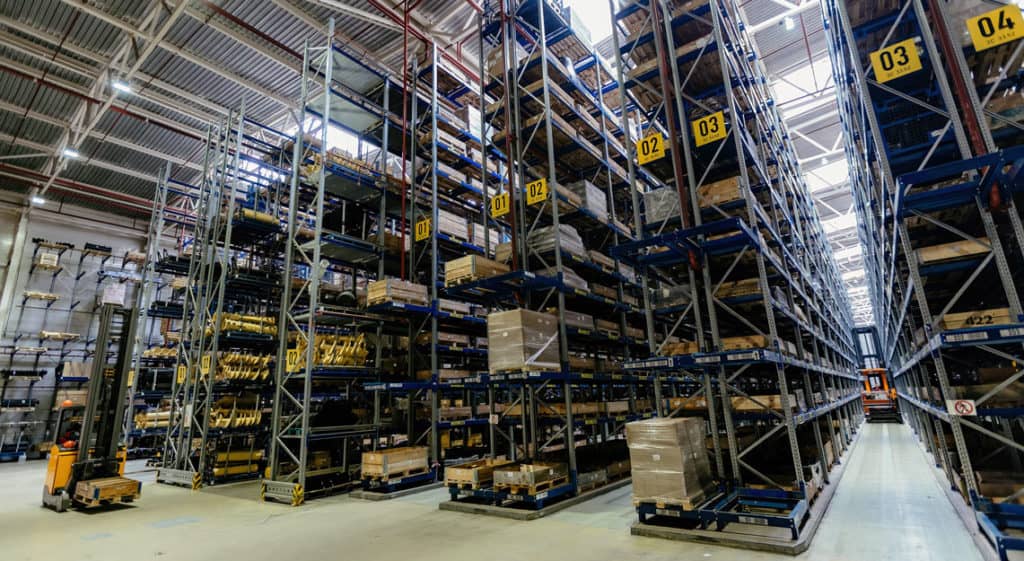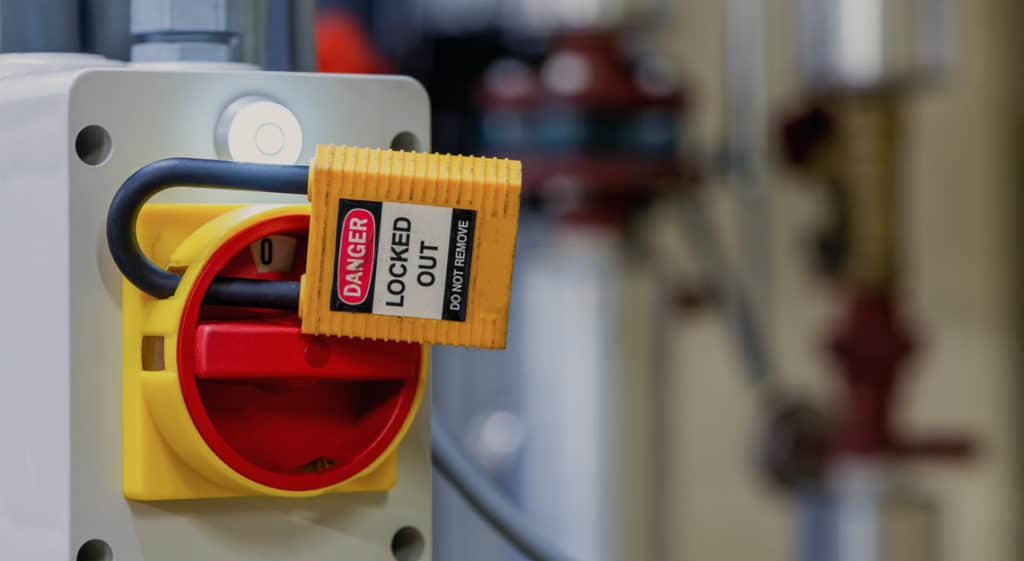Essential Warehouse Safety Equipment Your Business Needs
Warehouse safety should be the main concern of any owner, manager or worker. Revenue and output are great to have in mind, but if a team member can’t make it to their shift because they are in the hospital, none of that really matters. In 2020 alone, businesses saw an estimated 213,000 warehouse-related injuries.
Keeping these numbers down and your team safe means implementing both proper safety procedures and installing the right equipment. So, what does your business need to stay safe, compliant and productive?
Proper Storage Space and Equipment
When it comes to warehouse safety, it’s easy to only focus on the obvious areas of your warehouse. Things like fire suppression systems are a no-brainer and often a requirement for operation. But other areas of your facility like storage and related storage equipment can add another layer of safety to your warehouse.
Storage equipment may not fall into the safety equipment category, but it keeps your facility safe nonetheless. An organized storage area with proper safety procedures in place can limit on-site accidents and worker injuries — and it all starts with the right equipment.
Whether it’s keeping stock safely secure or giving workers the safe environment they need to get the job done, storage equipment is another tool in your kit to keep your warehouse safe.

When you properly store your inventory using the appropriate equipment, it means your workers won’t have to struggle to find items. The easier it is to accomplish their daily tasks, the less risk you place on your team. But it’s not just the proper equipment; it’s also making sure that equipment is safe.
Signing and Labels
Another element of safety is keeping everything labeled. This isn’t just for organization and convenience, either. While keeping up with a detailed labeling policy can ensure your team knows exactly where items are at all times, it also means they know where dangerous items or products are.
Keeping your team safe means properly labeling hazardous or dangerous materials:
- Caustic or acidic materials
- Toxic materials
- Flammable materials
- Heavy or awkward (potentially injury-causing) products
Some of these materials require proper labeling to be legally compliant, so make sure you fully understand your local laws and regulations. Generally speaking, labels should always declare the contents and destination while correctly displaying signage for any dangerous materials. It’s also a good idea to date your products — especially for perishable goods.
Personal Safety Equipment
Keeping your team safe means always requiring the proper personal protective equipment (PPE). While your team may already take safety precautions seriously, having a policy in place can help everyone get on board and understand the rules. If you can, provide the essentials to your team members. This includes:
- Helmets
- Face shields
- Gloves (properly rated for specific work)
- Boots or other foot protection
- Protective eyewear
- Ear protection
- Respiratory protection
- Ergonomic products
- Vests
- Etc.
You should always fully understand the risks associated with warehouse work to better define your PPE requirements. For instance, if your team is dealing with harsh chemicals, proper PPE will include things like chemical-resistant gloves and boots.
Lockout/Tagout Systems
Often, workers will need to work with or do maintenance on equipment with potentially hazardous energy:
- Electrical
- Mechanical
- Hydraulic
- Pneumatic
- Chemical
- Thermal
- Other sources
To keep both workers and other team members safe, you should always adopt a strict lockout/tagout system. These procedures disable relevant equipment to ensure workers don’t accidentally come into contact with the hazardous energy source.

These systems safeguard workers from hazardous energy sources and are a requirement to stay OSHA-compliant. Workers need training to become authorized to deal with lockout/tagout systems. This ensures consistency and adherence to these important safety rules.
First Aid
Having a first-aid kit might seem like an obvious safety element, but do you know exactly what your kit should contain? It’s easy to lose track of the contents of your first-aid kits. The last thing you want is missing items when an accident happens. That’s why you should not only keep a well-stocked first-aid kit but also enact procedures to check the contents regularly.
Most kits should contain some everyday products:
- Bandages
- Adhesive tape
- Pads
- Ammonia inhalants
- Cold pack
- Antiseptic wipes
- Eyewash
- Aspirin
- Burn spray
- Cotton applicators
- Gloves
- Scissors
- Tweezers
This is certainly not an exhaustive list. Moreover, you may want to include specific items for certain team members. For example, if a team member has diabetes, it might be helpful to have prescribed glucose or insulin ready in case of an emergency.

Looking for High-Quality Material Handling Equipment?
Keeping your team safe means using the right equipment. Learn how East Coast Storage Equipment can help.CONTACT US
Businesses should always have their kits in obvious locations and ensure team members understand where they are and how to use them. Always be aware of how many kits are in your facility and where they should be at all times.
Guardrails
Guardrails and other safety barriers play an essential role in keeping your team safe. While guardrails for equipment like mezzanines are of obvious importance, other areas of your facility may be better off with these safety features. Moreover, other separation equipment can help keep your inventory safe and organized.

These could be dividers to keep the flue space behind your pallet racks free from debris or other pallet rack dividers to keep your inventory in place and organized. Other equipment like handrails and stairways can also play a part in keeping your team safe. While some areas will require items like guardrails, other situations might not. Always refer to your local regulations and err on the side of caution whenever possible.
Emergency Wash Station
If your warehouse deals with any sort of hazardous material, it’s a good idea to install an emergency wash station. You can find quite a few different types of wash stations:
- Eye wash station
- Hand wash station
- Shower station
Depending on the type of work and materials your facility deals with, you could need one or all three of these styles. Always make sure your emergency wash stations are in obvious places where workers have easy access. Additionally, you’ll want to test and make sure your stations are in proper working order regularly.
Training workers is another essential part of safety. Be sure your team knows when to use the eye wash station and how to operate the machinery. Another tip is to make sure you have proper drainage under the station. This can help keep chemical concerns contained in the washing area.
Traffic Visibility Mirrors
The warehouse floor is a busy place. Not only are workers going from place to place, but large machines like forklifts are often in traffic lanes. While proper training and procedures can limit many on-site accidents, adding the proper safety equipment, like visibility mirrors, can also mitigate risk.
Traffic visibility mirrors can help team members see around blind corners. Many different sizes and shapes of mirrors can make seeing around even the most difficult corners possible. Using a wide-angle convex lens on certain corners can help with not only safety but other warehouse concerns like security.
Comments
That’s a wonderful list of equipment provided here. Through quality equipment, safety can be taken care of properly. Thanks a lot! Warehouse safety equipment should be given importance.
It is an important article for every business. The safety of workers should always be prioritized by employers.We, at RP Comtrade, are a part of the Welding Industry. We manufacture, distribute, export, and import welding safety products. Check out our website to know more! https://rpcomtrade.com/